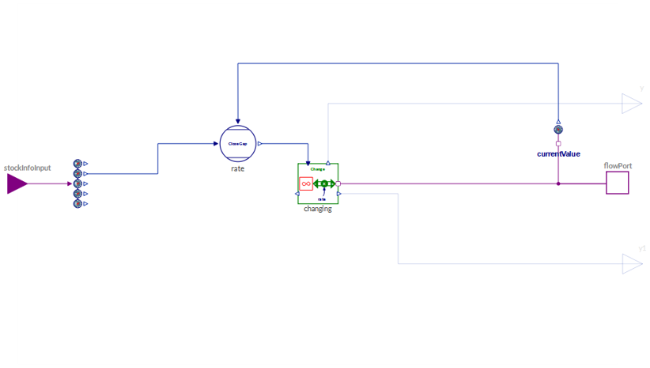ForceToStockValueFlow is obtained as closing the gap to input stock value |
|
Diagram
Information
This information is part of the Business Simulation Library (BSL). Please support this work and ► donate.
The force to stock value notation follows the one proposed by van Zijderveld [24]. It indicates some form of control as the influencing stock's value—connected to the stockInfoInput—provides the setpoint for a process of "closing the gap" adjustment (CloseGap) with regard to the influenced stock connected to the component's flowPort.
Implementation
 |
Notes
For more options, e.g., have control be active during limited period, use the →SimpleControl component with an optional input for the setpoint (hasExogenousSetpoint = true) and connnect it to the influencing stock using →StockInformation.
See also
Parameters (2)
| hasRateOutput |
Value: false Type: Boolean Description: = true, if the rate is reported via real output connectors |
|---|---|
| adjTime |
Value: modelSettings.dt Type: Time (s) Description: Time to close the gap |
Connectors (4)
| flowPort |
Type: FlowPort Description: Used to represent stock and flow connections |
|
|---|---|---|
| y |
Type: RealOutput Description: Output of current rate of flow |
|
| y1 |
Type: RealOutput Description: Output of current rate of flow |
|
| stockInfoInput |
Type: StockInfoInput Description: Input of record with stock-related information |
Components (5)
| modelSettings |
Type: ModelSettings Description: Setting important global variables within a model |
|
|---|---|---|
| rate |
Type: CloseGap Description: Rate of Change |
|
| currentValue |
Type: FlowPortSensor Description: Current value of connected stock |
|
| changing |
Type: ExogenousChange Description: A stock is filled or drained at a given rate |
|
| absoluteSensor |
Type: AbsoluteSensor Description: Reports basic stock–related information |
Revisions
- Introduced in v2.0.0.
